Mapping complexity at the Médialab Sciences Po in Paris
Published 15 March 2016 by Ewen Chardronnet
Set up in 2009 at the initiative of the sociologist and anthropologist Bruno Latour, the Médialab Sciences Po in Paris designs digital tools for social sciences. Encounter with these experts in data visualization.
Active day at the Médialab Sciences Po this Tuesday, March 8. Thirty or so people got together in a room in the basement of Sciences Po, rue de l’Université in Paris, for the weekly open meeting. The group gathered around Bruno Latour seems far from bored.
“The idea behind the Médialab was to offer equipment that would allow people to benefit from digital technologies to renew social methods and theories in the same way that hard sciences can have a scientific instrumentation service”, explains to us Paul Girard, the technical manager.
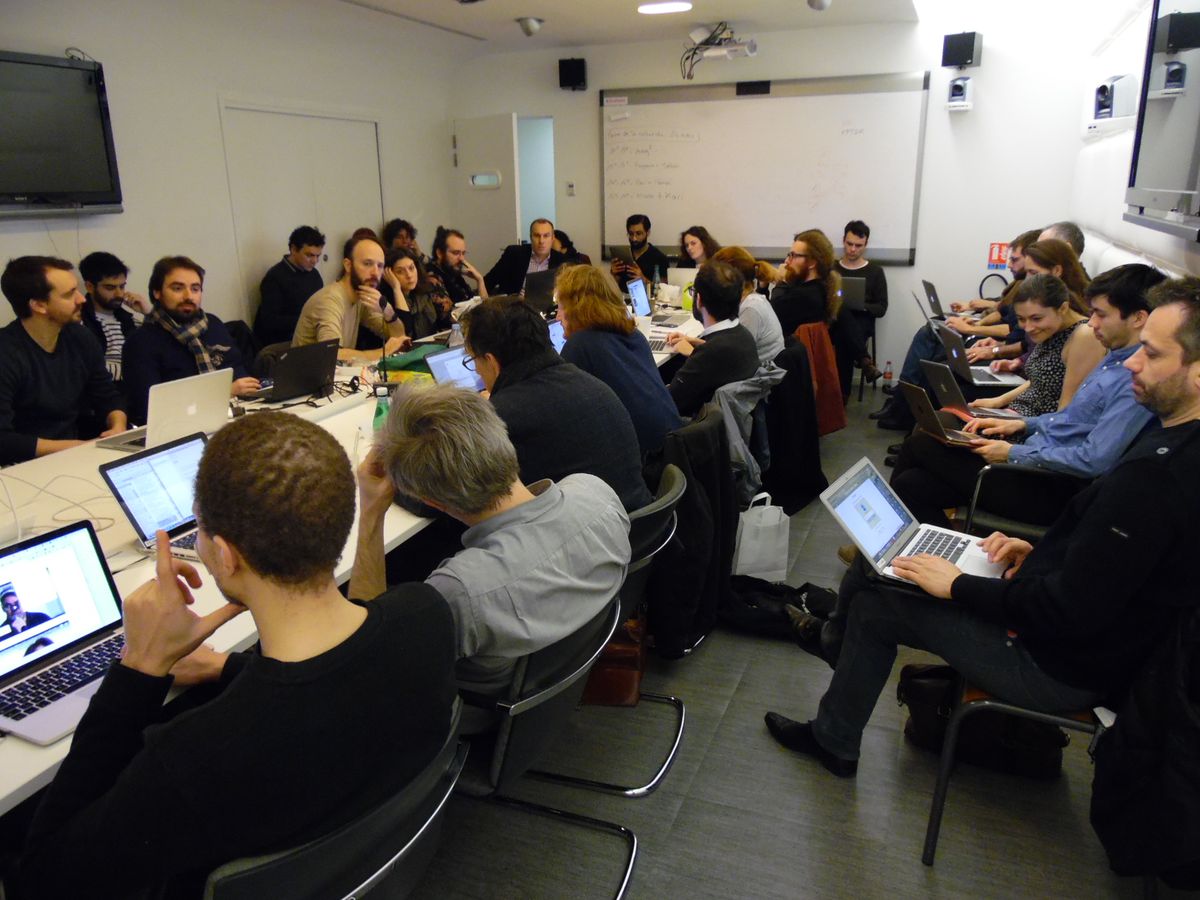
A laboratory of “publishers”
The Médialab began in 2009 with Paul Girard, digital engineer, and Tommaso Venturini, science sociologist. Today they are around thirty. Projects multiplied, financed by Europe, the State, the Ile-de-France region… The Médialab today brings together skills in social sciences, digital engineering, and information and interaction design.
Bruno Latour asks his team to raise their hands: “Who works in social sciences?” Around fifteen hands are raised. The same number for those who take an interest in innovation for teaching skills, five for information and graphic design, three for ecology. Nearly all for digital technologies.
“The Médialab has three highly integrated main missions: methodology, analysis, theory, summarizes Bruno Latour. The first is to be at the service of Sciences Po researchers grappling with new elements for which there is no well-established methodology yet. The second mission involves analyzing in what way digitization modifies media and mediations that are the object of social and human sciences, particularly in economics, political sciences, history and sociology. The third is to identify in what way digitization is not only about multiplying data and modifying existing practices but also about what new foothold it brings on the fundamental issues of the social theory. It is this exceptional combination between method, analysis and theory that explains the originality of its organization. The Médialab is composed of a small number of university students and a large number of engineers, all considered as publishers, be it articles, software or methods.”
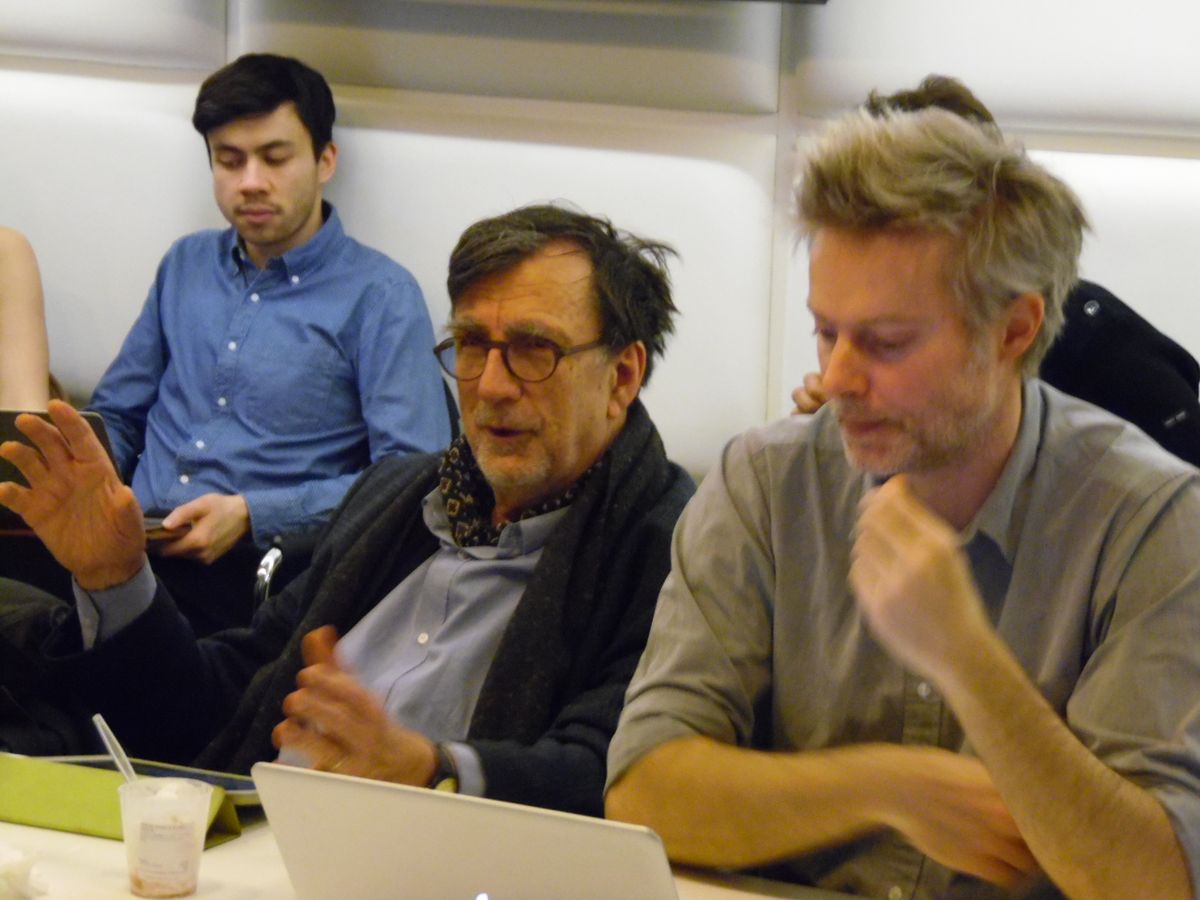
Renewing the tools of sociology
The Médialab first exploited “the new digital data corpus generated by the use of social media to open a third methodology, quali-quantitative and based on digital traces”, explains Paul Girard to us after the meeting (in sociology, the first two methods are qualitative and quantitative). A double approach that can be explained by the fact that data is very heterogeneous. “Web data not being controlled in the least and users spreading very different styles of speech, different formats, contents that can even be multimedia, etc.” To analyze them it was therefore necessary to “offer research and enquiry means that use digital technologies in terms of algorithmic processing and storage means”, he adds. The analysis of this mass of data is quantitative and its processing is carried out thanks to the power of computers. All the rest of the interpretation, reading, commenting, tagging, filtering and selection work is qualitative.
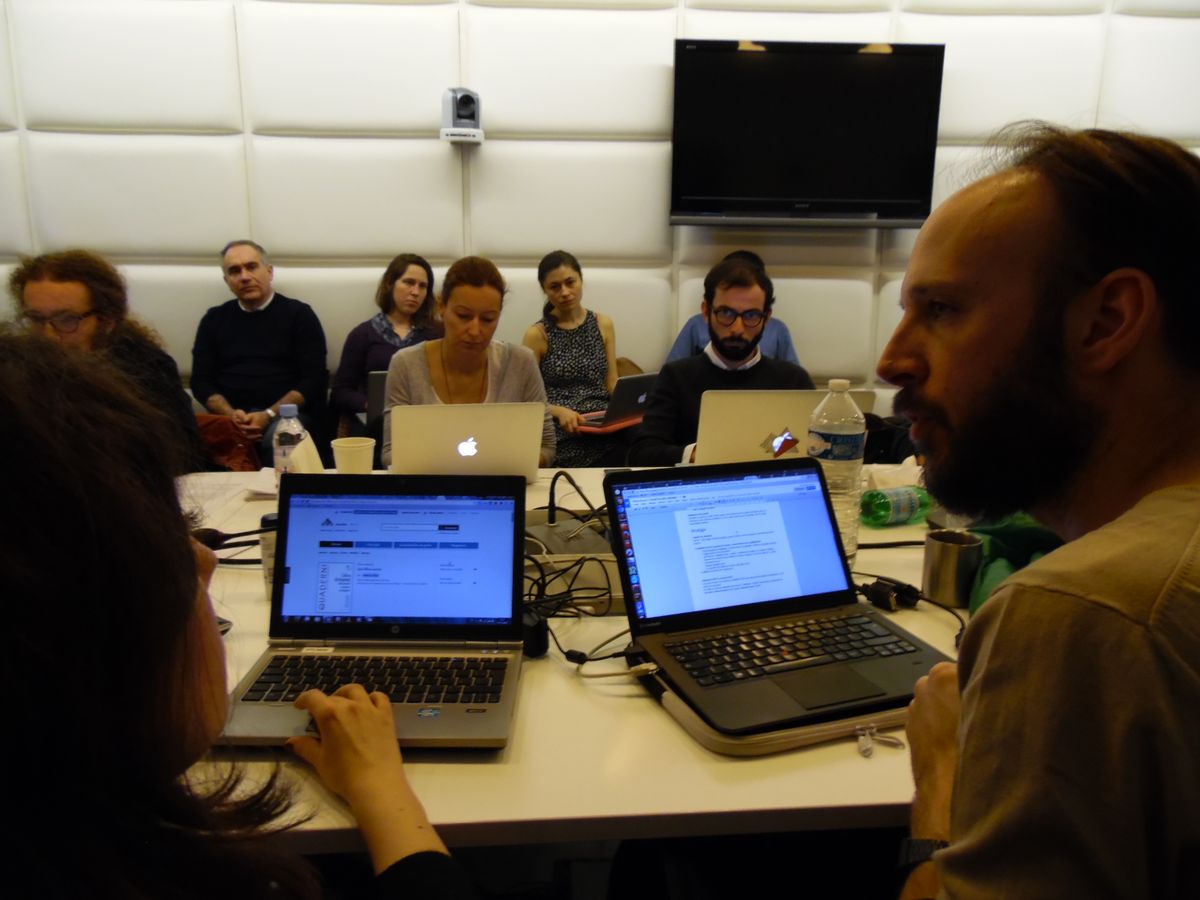
Datascape and E.A.T.
The originality of the Médialab is that it does not separate design, social sciences and engineering: engineers are party to the research. Christophe Leclercq, art historian, thus worked on one of the first projects in 2011, a “datascape” to understand how artists had worked with engineers as part of Experiments in Arts and Technology (E.A.T), famous American experience at the end of the 1960s. Besides, Christophe Leclercq is sharing with Bruno Latour the commission of Reset Modernity!, exhibition that can be seen from April 15 at ZKM, the media art and technology center in Karlsruhe.
“E.A.T. Datascape”, presentation by Christophe Leclercq:
Map of controversies
The Médialab directly puts to the test its new methods and tools in the educational field through the map of controversies course of its founder Bruno Latour. Thanks to the processing of data and digital traces and the analysis of complexity, “it is possible to study these controversies, see the work carried out by citizens to inflect government actions for example”, affirms the engineer in charge of the networks and web section Mathieu Jacomy. Neutrality of the Net, 2°C limit in the climate negotiations, ethics of DNA tests… these controversies affect scientific disciplines such as relations between science and society.
In 2015, while the COP21 the Médialab got strongly involved in the cartography of climatic negotiation issues: “The work on the climate permitted to prove the effectiveness of the Médialab methods in terms of visualization of complex data, and also to show the importance of their impact on the public debate, explains Bruno Latour. It’s a distinctive feature of the Médialab to take an interest in the whole information production chain, attaching importance to data input as well as its representation and its public restitution.” The project Make It Work was “largely boosted by the Médialab, as well as the Climate Negotiations Browser ”, adds Bruno Latour.
Presentation of the Climate Negotiations Browser:
The bricks of the Médialab
Among the Médialab practices, the agile methodology and the development of free software, the source codes of which are fully published on the Github network. The Médialab technical manager Paul Girard highlights the importance of developing “bricks” that will be used to make other tools for other users or for themselves. It ranges from the crudest brick such as a library of algorithms to completely finalized tools like a datascape for the general public.
The Médialab thus developed the Sigma.js library that allows you to represent a network on the Web. This tool was used to design Manylines, an online prototype brick on which the user deposits his network and with which he can then produce visualization “slides”.
The Médialab is also working on the development of the Gephi exploration software for networks that allows you to carry out visualization and spatialization of graphs and can be used for the analysis of social networks but also in the history of the Web. Gephi has already been downloaded a million times.
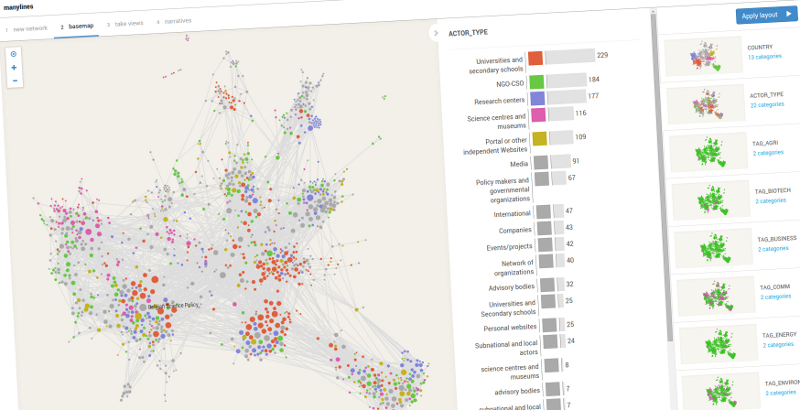
Leaving the lab
The Médialab also develops webmining tools, such as Hyphe that generalizes web data collection thanks to a “crawler” interface. You deposit your web addresses there. Hyphe collects the contents of websites and offers annex websites. It all happens entirely online with an interface that requires no command line.
Because the ambition of the Médialab is to generalize its tools. It is the case for the map base Utopies Concrètes, that indexes some 3,000 places and associations in France that are alternative, pirate, eco-feminist or libertarian. “We wanted to make a tool that was in practice usable by sociologists and by the civil society, explains Mathieu Jacomy. It is about freeing technologies but also making them usable. It is not a question of producing laboratory software that no one will use thereafter!”
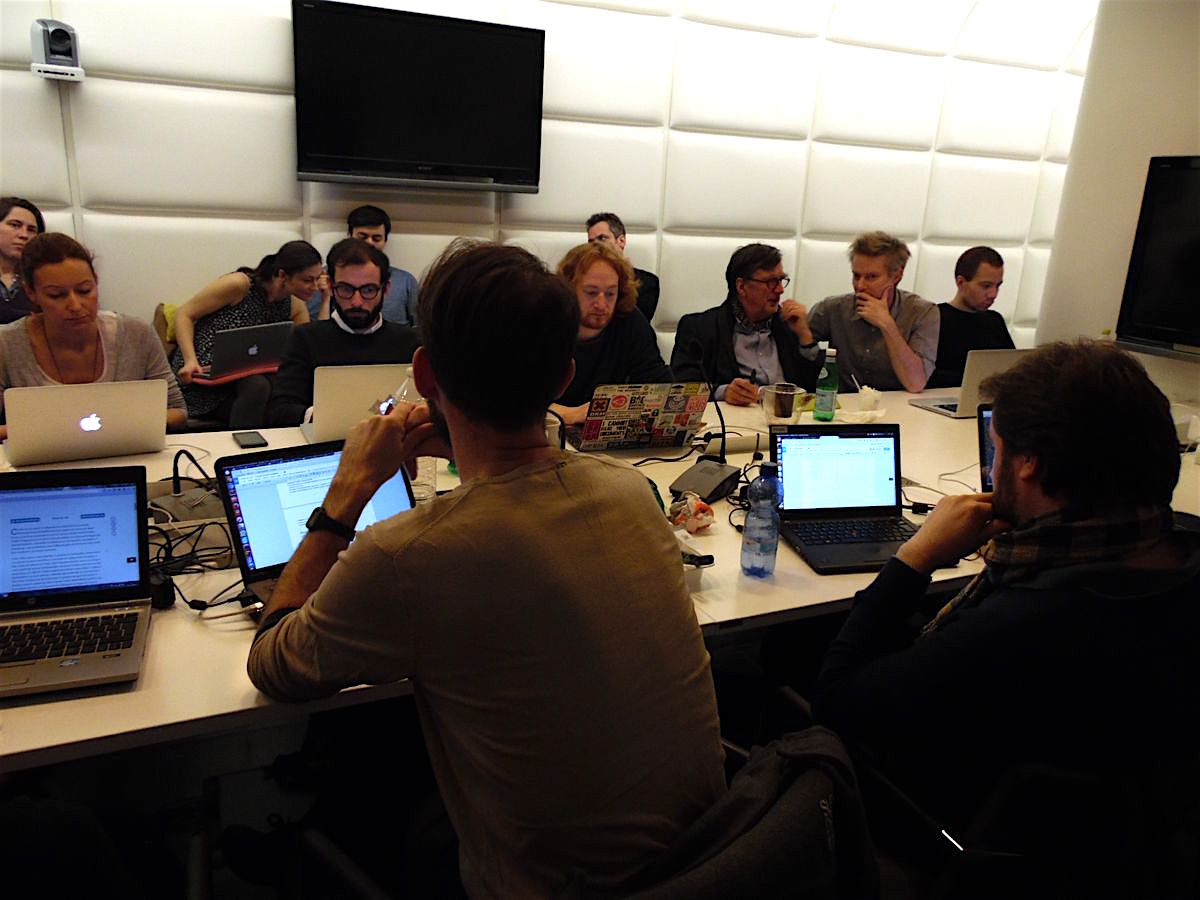
See all the other projects on the Médialab Sciences Po website
